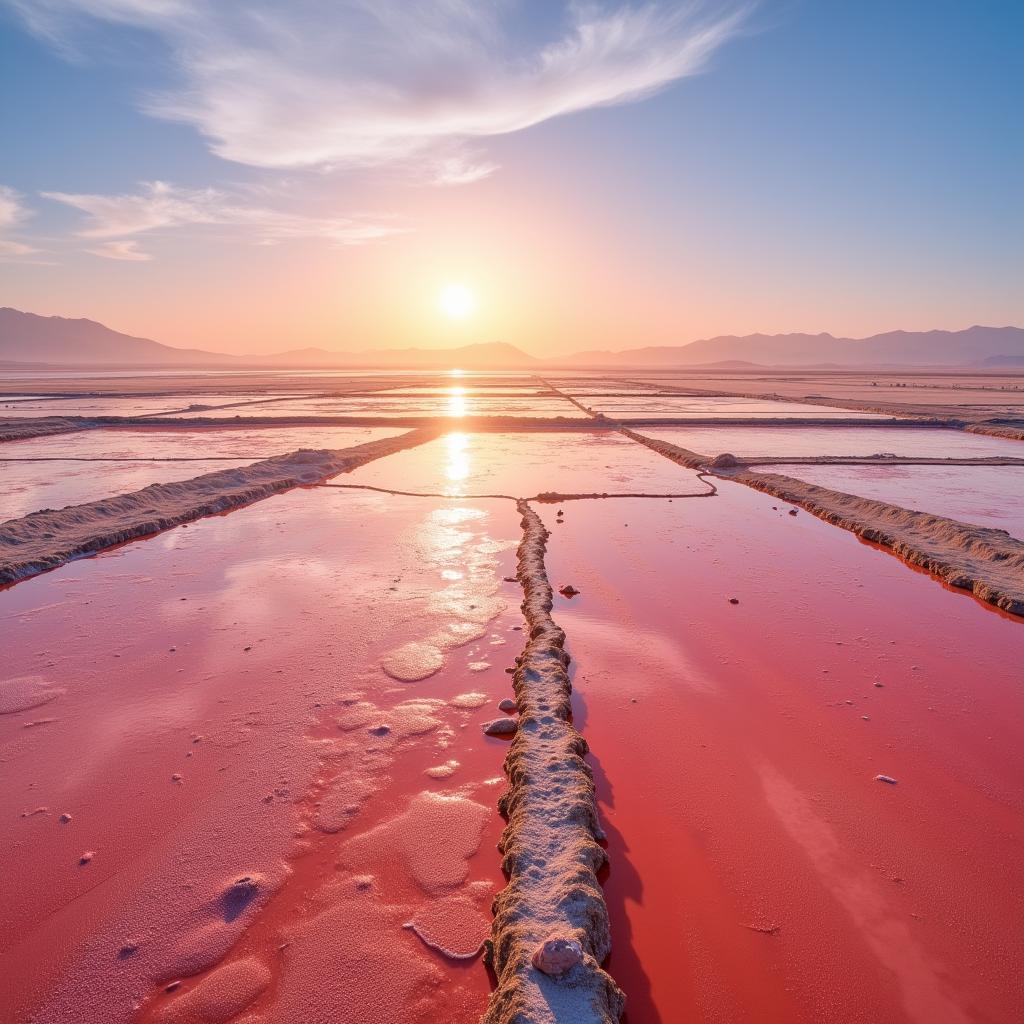Salt, a seemingly simple ingredient, is an essential part of our daily lives. But have you ever wondered, “Como Se Ase La Sal?” or “how is salt made?”. The journey of salt from its source to our tables is a fascinating process that involves both natural and human interventions. Let’s dive into the intriguing world of salt production.
The Two Major Sources of Salt: Seawater and Rock Salt
Salt’s origin dictates its extraction method. The two primary sources are:
- Seawater: This is the most common source, especially in warm climates. The process involves evaporating seawater in large ponds, leaving behind salt crystals.
- Rock Salt: Mined from underground deposits, rock salt originates from ancient, dried-up seas. Miners extract large salt blocks, which are then crushed and processed.
 Salt Evaporation Ponds
Salt Evaporation Ponds
Sea Salt Harvesting: Harnessing the Power of the Sun
In regions blessed with abundant sunshine, sea salt production relies on a natural and sustainable method: solar evaporation.
- Creating Shallow Ponds: Seawater is channeled into a series of interconnected shallow ponds.
- Evaporation and Concentration: The sun’s heat gradually evaporates the water, increasing the salt concentration in the remaining brine.
- Crystallization: As the brine becomes supersaturated, salt crystals begin to form and settle at the bottom of the pond.
- Harvesting: Once the salt layer is thick enough, it’s carefully harvested, leaving behind any impurities.
This traditional method produces various types of sea salt, each with a unique flavor profile influenced by the region’s climate and mineral composition.
Mining Rock Salt: Delving into Earth’s Salty Depths
For inland areas, rock salt deposits offer a rich source of this essential mineral.
- Locating Deposits: Geologists identify underground salt formations using various techniques, including seismic surveys.
- Drilling and Blasting: Miners drill into the earth to create access shafts and use explosives to break up the salt deposits.
- Extraction and Crushing: Large machines haul the extracted salt blocks to the surface, where they are crushed into smaller, manageable pieces.
- Purification and Processing: The crushed salt undergoes purification processes to remove impurities and refine its texture.
Rock salt, with its larger grain size and often higher mineral content, finds its place in various applications, from culinary uses to de-icing roads.
From Crystals to Table Salt: Refining and Iodization
Whether derived from seawater or rock salt, the journey doesn’t end with extraction. Further processing ensures the salt’s quality and addresses potential nutritional deficiencies.
- Washing and Grinding: The harvested salt undergoes thorough washing to remove impurities and is then ground to achieve desired textures.
- Iodization: In many countries, salt is fortified with iodine to prevent iodine deficiency disorders, a significant public health concern.
- Anti-caking Agents: To prevent clumping, anti-caking agents are often added, ensuring free-flowing salt.
 Salt Processing Plant
Salt Processing Plant
The Importance of Salt: Beyond Flavor Enhancement
While we primarily associate salt with enhancing the flavor of our food, its significance extends far beyond the culinary realm.
- Preserving Food: For centuries, salt has played a crucial role in preserving food, inhibiting bacterial growth and extending shelf life.
- Electrolyte Balance: Salt provides essential electrolytes like sodium and chloride, crucial for maintaining fluid balance and nerve function in our bodies.
- Industrial Uses: Salt finds applications in various industries, including manufacturing, water treatment, and even textile production.
“Como se ase la sal?” Answered and More
Understanding how salt is made provides a newfound appreciation for this seemingly simple ingredient. From the sun-drenched evaporation ponds to the depths of underground mines, the journey of salt highlights the interconnectedness of nature, human ingenuity, and our basic need for this essential mineral.

